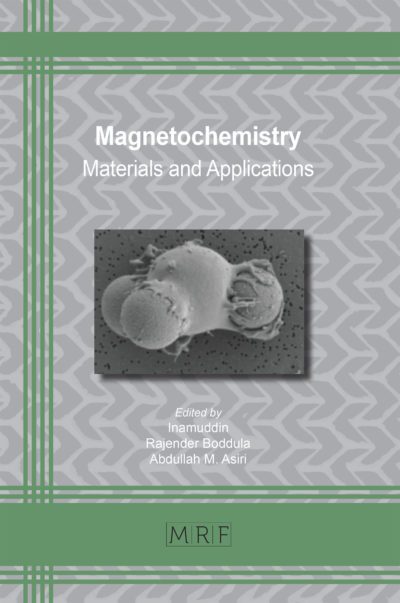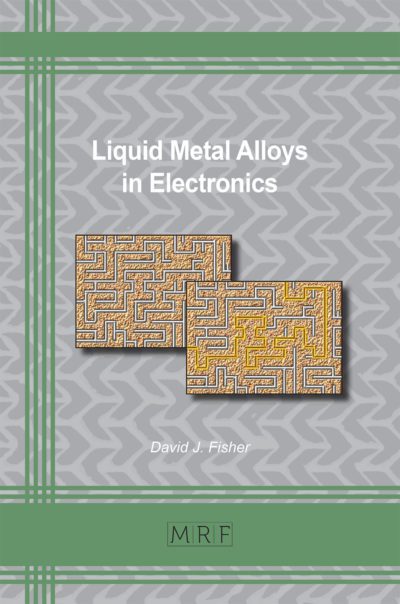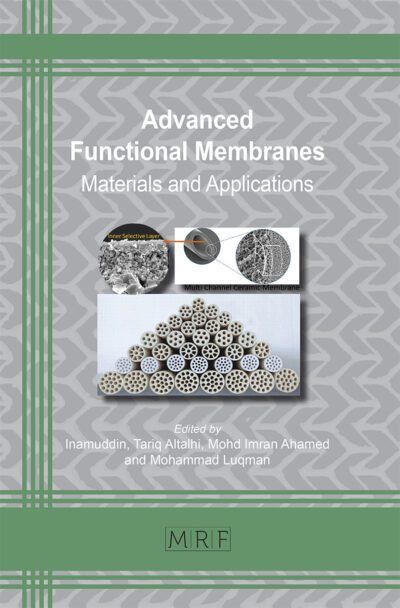Two Different Acid Oxidation Syntheses to Open C60 Fullerene for Heavy Metal Detection
E. Ciotta, L. Burratti, P. Prosposito, E. Bolli, S. Kaciulis, S. Antonaroli, R. Pizzoferrato
Abstract. Graphene oxide quantum dots (GOQDs) can be synthesized through a large variety of synthesis methods starting from different carbon allotropes such as nanotubes, graphite, C60 and exploiting various synthesis and reactions. These different approaches have great influence on the properties of the obtained materials, and, consequently, on the potential applications. In this work, Buckminster C60 fullerene has been used to prepare unfolded fullerene nanoparticles (UFNPs) via two distinct synthesis methods namely: Hummer and H2SO4 + HNO3 solution. The different characteristics of the final materials and the different response in the presence of heavy metal ions have been investigated in view of sensing applications of water contamination.
Keywords
Carbon Materials, Heavy Metals, Sensors, Spectroscopy, Photoluminescence, Quenching, Chemical Oxidation
Published online 2/25/2020, 11 pages
Citation: E. Ciotta, L. Burratti, P. Prosposito, E. Bolli, S. Kaciulis, S. Antonaroli, R. Pizzoferrato, Two Different Acid Oxidation Syntheses to Open C60 Fullerene for Heavy Metal Detection, Materials Research Proceedings, Vol. 16, pp 16-26, 2020
DOI: https://doi.org/10.21741/9781644900710-3
Part of the book on Photonics and Photoactive Materials
References
[1] X. T. Zheng, A. Ananthanarayanan, K. Q. Luo, and P. Chen, “Glowing Graphene Quantum Dots and Carbon Dots : Properties , Syntheses , and Biological Applications” Small, vol. 11, no. 14, pp. 1620–1636, 2015. https://doi.org/10.1002/smll.201402648
[2] L. Fan, Y. Hu, X. Wang, L. Zhang, F. Li, D. Han, L. Zhenggang, Z. Qixian, Z. Wang and L. Niu, “Fluorescence resonance energy transfer quenching at the surface of graphene quantum dots for ultrasensitive detection of TNT” Talanta, vol. 101, pp. 192–197, 2012. https://doi.org/10.1016/j.talanta.2012.08.048
[3] M. K. Kumawat, M. Thakur, R. B. Gurung, and R. Srivastava, “Graphene Quantum Dots for Cell Proliferation, Nucleus Imaging, and Photoluminescent Sensing Applications” Sci. Rep., vol. 7, no. 1, pp. 1–16, 2017. https://doi.org/10.1038/s41598-017-16025-w
[4] F. Wang, Z. Gu, W. Lei, W. Wang, X. Xia, and Q. Hao, “Graphene quantum dots as a fluorescent sensing platform for highly efficient detection of copper ( II ) ions” Sensors Actuators B. Chem., vol. 190, pp. 516–522, 2014. https://doi.org/10.1016/j.snb.2013.09.009
[5] E. Zor, E. Morales-Narváez, A. Zamora-Gálvez, H. Bingol, M. Ersoz, and A. Merkoçi, “Graphene quantum dots-based photoluminescent sensor: A multifunctional composite for pesticide detection” ACS Appl. Mater. Interfaces, vol. 7, pp. 20272–20279, 2015. https://doi.org/10.1021/acsami.5b05838
[6] T. Wu, H. Shen, L. Sun, B. Cheng, B. Liu, and J. Shen, “Nitrogen and boron doped monolayer graphene by chemical vapor deposition using polystyrene, urea and boric acid” New J. Chem., vol. 36, no. 6, pp. 1385–1391, 2012. https://doi.org/10.1039/c2nj40068e
[7] Y. Dong, J. Shao, C. Chen, H. Li, R. Wang, Y. Chi, X. Lin and G. Chen, “Blue luminescent graphene quantum dots and graphene oxide prepared by tuning the carbonization degree of citric acid” Carbon N. Y., vol. 50, pp. 4738–4743, 2012. https://doi.org/10.1016/j.carbon.2012.06.002
[8] I. Shtepliuk, N. M. Caffrey, T. Iakimov, V. Khranovskyy, I. A. Abrikosov, and R. Yakimova, “On the interaction of toxic Heavy Metals (Cd, Hg, Pb) with graphene quantum dots and infinite graphene” Sci. Rep., vol. 7, no. 1, p. 3934, 2017. https://doi.org/10.1038/s41598-017-04339-8
[9] R. Sitko, E. Turek, B. Zawisa, E. Malicka, E. Talik, J. Heimann, A. Gagor, B. Feist and R. Wrzalik, “Adsorption of divalent metal ions from aqueous solutions using graphene oxide” Dalt. Trans., vol. 42, no. 16, p. 5682, 2013. https://doi.org/10.1039/c3dt33097d
[10] Jian Ju and W. Chen, “Graphene Quantum Dots as a Fluorescence Probes for Sensing Metal Ions: Synthesis and Applications” Curr. Org. Chem., vol. 19, pp. 1150–1162, 2015. https://doi.org/10.2174/1385272819666150318222547
[11] D. Wang, L. Wang, X. Dong, Z. Shi, and J. Jin, “Chemically tailoring graphene oxides into fluorescent nanosheets for Fe3+ ion detection” Carbon N. Y., vol. 50, no. 6, pp. 2147–2154, 2012. https://doi.org/10.1016/j.carbon.2012.01.021
[12] H. Chakraborti, S. Sinha, S. Ghosh, and S. Kalyan, “Interfacing water soluble nanomaterials with fluorescence chemosensing : Graphene quantum dot to detect Hg2+ in 100 % aqueous solution” Mater. Lett., vol. 97, pp. 78–80, 2013. https://doi.org/10.1016/j.matlet.2013.01.094
[13] Z. Li, Y. Wang, Y. Ni, and S. Kokot, “A rapid and label-free dual detection of Hg (II) and cysteine with the use of fluorescence switching of graphene quantum dots” Sensors Actuators B. Chem., vol. 207, pp. 490–497, 2015. https://doi.org/10.1016/j.snb.2014.10.071
[14] H. Huang, L. Liao, X. Xu, M. Zou, F. Liu, and N. Li, “The electron-transfer based interaction between transition metal ions and photoluminescent graphene quantum dots (GQDs): A platform for metal ion sensing” Talanta, vol. 117, pp. 152–157, 2013. https://doi.org/10.1016/j.talanta.2013.08.055
[15] S. Huang, H. Qiu, F. Zhu, S. Lu, and Q. Xiao, “Graphene quantum dots as on-off-on fluorescent probes for chromium (VI) and ascorbic acid” Microchim. Acta, vol. 182, pp. 1723–1731, 2015. https://doi.org/10.1007/s00604-015-1508-6
[16] X. Liu, W. Gao, and X. Zhou, “Pristine graphene quantum dots for detection of copper ions” J. Mater. Res., vol. 29, no. 13, pp. 1401–1407, 2014. https://doi.org/10.1557/jmr.2014.145
[17] R. Xie, Z. Wang, W. Zhou, Y. Liu, L. Fan, Y. Li, and X. Li, “Graphene quantum dots as smart probes for biosensing” Anal. Methods, vol. 8, no. 20, pp. 4001–4006, 2016. https://doi.org/10.1039/C6AY00289G
[18] C. K. Chua, Z. Sofer, P. Simek, O. Jankovsky, K. Klimova, S. Bakardjieva and M. Pumera , “Synthesis of strongly fluorescent graphene quantum dots by cage-opening buckminsterfullerene” ACS Nano, vol. 9, no. 3, pp. 2548–2555, 2015. https://doi.org/10.1021/nn505639q
[19] X. Tan, Y. Li, X. Li, S. Zhou, L. Fan, and S. Yang, “Electrochemical synthesis of small-sized red fluorescent graphene quantum dots as a bioimaging platform” Chem. Commun., vol. 51, no. 13, pp. 2544–2546, 2015. https://doi.org/10.1039/C4CC09332A
[20] K. Li, W. Liu, Y. Ni, D. Li, D. Lin, Z. Su and G. Wei, “Technical synthesis and biomedical applications of graphene quantum dots” J. Mater. Chem. B, vol. 5, no. 25, pp. 4811–4826, 2017. https://doi.org/10.1039/C7TB01073G
[21] L. L. Li, J. Ji, R. Fei, C. Z. Wang, Q. Lu, J. R. Zhang, and J. J. Zhu, “A Facile Microwave Avenue to Electrochemiluminescent Two-Color Graphene Quantum Dots” Adv. Funct. Mater., vol. 22, no. 14, pp. 2971–2979, 2012. https://doi.org/10.1002/adfm.201200166
[22] F. Liu, M. H. Jang, H. D. Ha, J. H. Kim, Y. H. Cho, and T. S. Seo, “Facile synthetic method for pristine graphene quantum dots and graphene oxide quantum dots: Origin of blue and green luminescence” Adv. Mater., vol. 25, no. 27, pp. 3657–3662, 2013. https://doi.org/10.1002/adma.201300233
[23] L. Staudenmaier, “Darstellung der Graphitslure” Ger. Chem. Soc., vol. 31, no. 2, pp. 1481–1487, 1898. https://doi.org/10.1002/cber.18980310237
[24] H. P. Boehm, A. Clauss, G. O. Fischer, and U. Hofmann, “Dünnste kohlenstoff-folien” Zeitschrift fur Naturforsch. – Sect. B J. Chem. Sci., vol. 17, no. 3, pp. 150–153, 1962. https://doi.org/10.1515/znb-1962-0302
[25] W. S. Hummers and R. E. Offeman, “Preparation of Graphitic Oxide” J. Am. Chem. Soc., vol. 80, no. 6, p. 1339, 1958. https://doi.org/10.1021/ja01539a017
[26] C. Botas P. Álvarez, P. Blanco, M. Granda, C. Blanco, R. Santamaría, and R. Menéndez, , “Graphene materials with different structures prepared from the same graphite by the Hummers and Brodie methods” Carbon N. Y., vol. 65, pp. 156–164, 2013. https://doi.org/10.1016/j.carbon.2013.08.009
[27] E. Ciotta, P. Prosposito, P. Tagliatesta, C. Lorecchio, L. Stella, S. Kaciulis, P. Soltani, E. Placidi and R. Pizzoferrato, “Discriminating between different heavy metal ions with fullerene-derived nanoparticles” Sensors (Switzerland), vol. 18, no. 5, pp. 1–15, 2018. https://doi.org/10.3390/s18051496
[28] E. Ciotta, S. Paoloni, M. Richetta, P. Prosposito, P. Tagliatesta, C. Lorecchio, I. Venditti, I. Fratoddi, S. Casciardi and R. Pizzoferrato, “Sensitivity to Heavy-Metal Ions of Unfolded Fullerene Quantum Dots” Sensors, vol. 17, p. 2614, 2017. https://doi.org/10.3390/s17112614
[29] A. V Naumov, Optical Properties of Graphene Oxide, in Graphene Oxide: Fundamentals and Applications. Chichester, UK: John Wiley & Sons, Ltd, 2016. https://doi.org/10.1002/9781119069447.ch5
[30] L. Yun and Z. Kyusik, “Graphene oxide-modified ZnO particles: synthesis, characterization , and antibacterial properties” Int. J. Nanomedicine, vol. 10, pp. 79–92, 2015. https://doi.org/10.2147/IJN.S88319
[31] S. J. Bradley, R. Kroon, G. Laufersky, M. Röding, R.V. Goreham, T. Gschneidtner, and T. Nann., “Heterogeneity in the fluorescence of graphene and graphene oxide quantum dots” Microchim. Acta, vol. 184, no. 3, pp. 871–878, 2017. https://doi.org/10.1007/s00604-017-2075-9
[32] S. Kaciulis, A. Mezzi, P. Calvani and D.M. Trucchi, “Electron spectroscopy of the main allotropes of carbon”, Surf. Interface Anal., vol. 46, pp. 966-969, 2014. https://doi.org/10.1002/sia.5382
[33] P. Huang, J.J. Shi, M. Zhang, X. H. Jiang, H. X. Zhong, Y.M. Ding and J. Lu, “Anomalous Light Emission and Wide Photoluminescence Spectra in Graphene Quantum Dot: Quantum Confinement from Edge Microstructure” J. Phys. Chem. Lett., vol. 7, no. 15, pp. 2888–2892, 2016. https://doi.org/10.1021/acs.jpclett.6b01309
[34] Y. Li, H. Shu, S. Wang, and J. Wang, “Electronic and optical properties of graphene quantum dots: The role of many-body effects” J. Phys. Chem. C, vol. 119, no. 9, pp. 4983–4989, 2015. https://doi.org/10.1021/jp506969r
[35] M. H. Jang, S. H. Song, H. D. Ha, T. S. Seo, S. Jeon, and Y. H. Cho, “Origin of extraordinary luminescence shift in graphene quantum dots with varying excitation energyAn experimental evidence of localized sp2 carbon subdomain” Carbon N. Y., vol. 118, pp. 524–530, 2017. https://doi.org/10.1016/j.carbon.2017.03.060
[36] C. T. Chien, S. Li, W.J. Lai, Y. Yeh, H. A. Chen, I. S. Chen, and M. Chen, “Tunable photoluminescence from graphene oxide” Angew. Chemie – Int. Ed., vol. 51, no. 27, pp. 6662–6666, 2012. https://doi.org/10.1002/anie.201200474
[37] E. Ciotta, P. Prosposito, and R. Pizzoferrato, “Positive curvature in Stern-Volmer plot described by a generalized model for static quenching” J. Lumin., vol. 206, pp. 518–522, 2019. https://doi.org/10.1016/j.jlumin.2018.10.106
[38] H. Huang, L. Liao, X. Xu, M. Zou, F. Liu, and N. Li, “The electron-transfer based interaction between transition metal ions and photoluminescent graphene quantum dots (GQDs): A platform for metal ion sensing” Talanta, vol. 117, pp. 152–157, 2013. https://doi.org/10.1016/j.talanta.2013.08.055
[39] L. Wu, L. Liu, B. Gao, R. Muñoz-Carpena, M. Zhang, H. Chen, and H. Wang,, “Aggregation kinetics of graphene oxides in aqueous solutions: Experiments, mechanisms, and modeling” Langmuir, vol. 29, no. 49, pp. 15174–15181, 2013. https://doi.org/10.1021/la404134x
[40] S. T. Yang , Y. Chang, H. Wang, G. Liu, S. Chen, Y. Wang, and A. Cao, A., “Folding/aggregation of graphene oxide and its application in Cu2+ removal” J. Colloid Interface Sci., vol. 351, no. 1, pp. 122–127, 2010. https://doi.org/10.1016/j.jcis.2010.07.042
[41] X. Yang, L. Xia, and S. Song, “Arsenic Adsorption From Water Using Graphene-Based Materials As Adsorbents: a Critical Review” Surf. Rev. Lett., vol. 24, no. 01, p. 1730001, 2017. https://doi.org/10.1142/S0218625X17300015
[42] A. T. Afaneh and G. Schreckenbach, “Fluorescence Enhancement/Quenching Based on Metal Orbital Control: Computational Studies of a 6-Thienyllumazine-Based Mercury Sensor” J. Phys. Chem. A, vol. 119, no. 29, pp. 8106–8116, 2015. https://doi.org/10.1021/acs.jpca.5b04691
[43] I. Shtepliuk, V. Khranovskyy, and R. Yakimova, “Insights into the origin of the excited transitions in graphene quantum dots interacting with heavy metals in different media” Phys. Chem. Chem. Phys., vol. 19, no. 45, pp. 30445–30463, 2017. https://doi.org/10.1039/C7CP04711H














